| pcstats
heatsink clearance measurements |
| top clearance: |
8mm |
| bottom (cam) clearance: |
12mm |
|
| left side (arm) clearance: |
13mm |
| right side clearance |
21mm |
|
| socket mounting holes: |
4mm ødia. |
| max.
heatsink base dimensions (wxh): |
~85x82 mm |
|
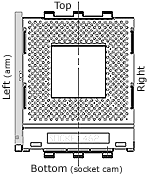 Note: Approx.
measurements are made from the edge of the socket (not the clips) to
the closest obstacle taller than the ZIF socket
itself. Note: Approx.
measurements are made from the edge of the socket (not the clips) to
the closest obstacle taller than the ZIF socket
itself.
The socket is 51mm across, and 62mm from
top to bottom. | |
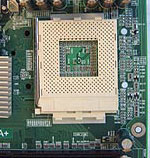 |
Epox has cleared the CPU socket area of most
obstructions and you can fit just any type of medium-sized heatsink you want on this board. With the
four mounting holes around the CPU socket, we didn't have any problems putting
a Zalman, Swiftech MC462-A or Alpha PAL8045 on
the motherboard.
BIOS:
The real beauty of the board is in its BIOS.
There are so many tweaks and overclocking options to keep everyone happy! From
CAS Latency adjustments to AGP Timings to Multiplier adjustments, everthing
you need is right there.
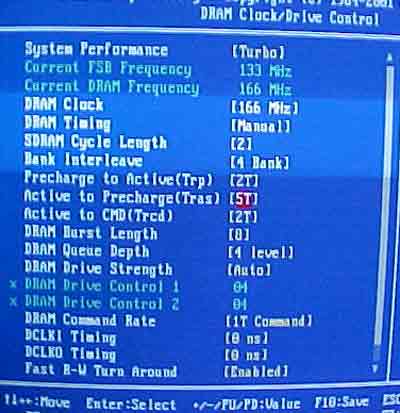
As you can see Epox has spared no expense when it comes to memory
tweaking. There are just so many different combinations. You can adjust the DDR
RAM frequency from 100/133/166 MHz, CAS Latency, Bank Interleave and even DRAM
Command Rate. If you can't find the memory tweak you want here in this bios you
won't find it anywhere.
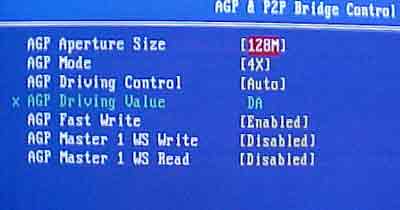
Regular set of AGP controls, from Aperature Size, AGP mode and
Driving Control.
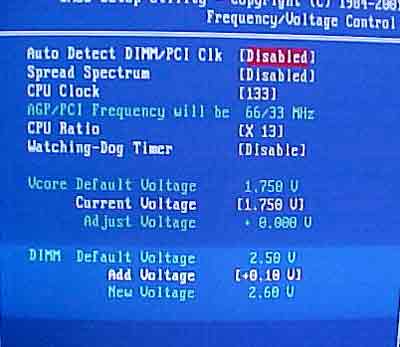
Under Frequency Control we can tune the FSB 1 MHz at a time
between 100-255 MHz and a full set of multiplier controls. As you can see, you
can also adjust the CPU and DIMM voltages and this is where Epox truly shines.
CPU voltage can be upped to 2.2V and the DIMM can be raised as high as 3.2V.
More extreme overclockers now don't need to voltage mod their motherboards to
reach these high voltages. Of course at 2.2V, you'd better have some sort of
water cooling at least to keep that Athlon/XP cooled because it will generate a
lot of heat!
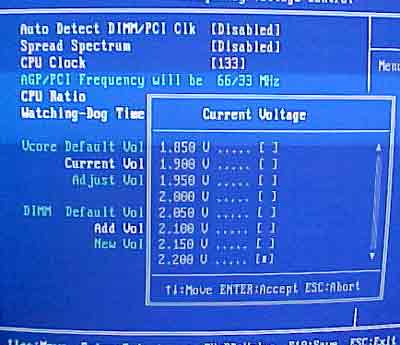
Overclocking:
Overclocking the 8K3A+ was a very interesting
adventure. We had some pretty weird results, because of the KT333CE's 2/5th AGP
and 1/5 PCI divider, we found that the performance of the motherboard wasn't
all that great. In fact, even at 180 MHz FSB's we could barely beat out older
KT266A based boards at 166 MHz. We noted that in the KT333CE VS
KT266A article. We were able to get it up to a 180 MHz
FSB however as you'll see the performance is honestly not all that
impressive.
